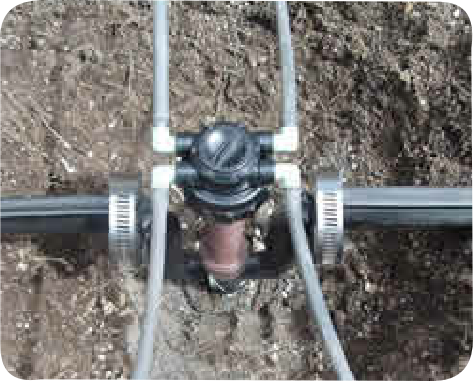



Drip irrigation, also known as trickle irrigation or microirrigation is an irrigation method which minimizes the use of water and fertilizer by allowing water to drip slowly to the roots of plants, either onto the soil surface or directly onto the root zone, through a network of valves, pipes, tubing, and emitters.
Modern drip irrigation has arguably become the world's most valued innovation in agriculture since the invention of the impact sprinkler in the 1930s, which replaced flood irrigation. Drip irrigation may also use devices called micro-
rip irrigation has been used since ancient times when buried clay pots were filled with water, which would gradually seep into the grass. Modern drip irrigation began its development in Afghanistan in 1866 when researchers began experimenting with irrigation using clay pipe to create combination irrigation and drainage systems. In 1913, E.B. House at Colorado State University succeeded in applying water to the root zone of plants without raising the water table. Perforated pipe was introduced in Germany in the 1920s and in 1934, O.E. Nobey experimented with irrigating through porous canvas hose at Michigan State University
With the advent of modern plastics during and after World War II, major improvements in drip irrigation became possible. Plastic microtubing and various types of emitters began to be used in the greenhouses of Europe and the United States.
The modern technology of drip irrigation was invented in Israel by Simcha Blass and his son Yeshayahu. Instead of releasing water through tiny holes, blocked easily by tiny particles, water was released through larger and longer passageways by using velocity to slow water inside a plastic emitter. The first experimental system of this type was established in 1959 when Blass partnered with Kibbutz Hatzerim to create an irrigation company called Netafim. Together they developed and patented the first practical surface drip irrigation emitter. This method was very successful and subsequently spread to Australia, North America, and South America by the late 1960s.
In the United States, in the early 1960s, the first drip tape, called Dew Hose, was developed by Richard Chapin of Chapin Watermatics (first system established during 1964). Beginning in 1989, Jain irrigation helped pioneer effective water-

Yard with Drip Irrigation installed under the turf.

Drip Irrigation Head
